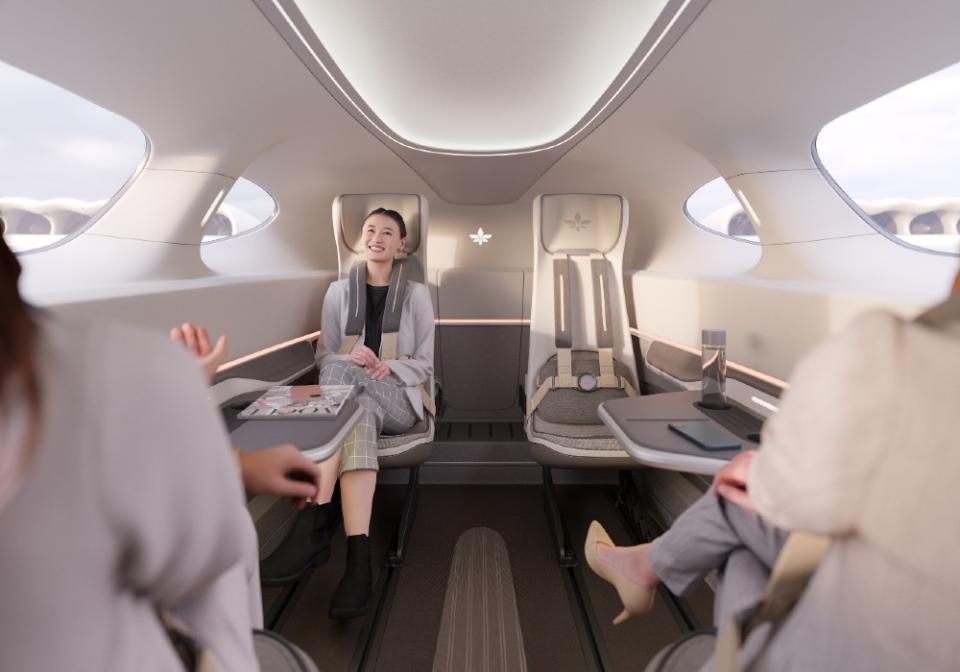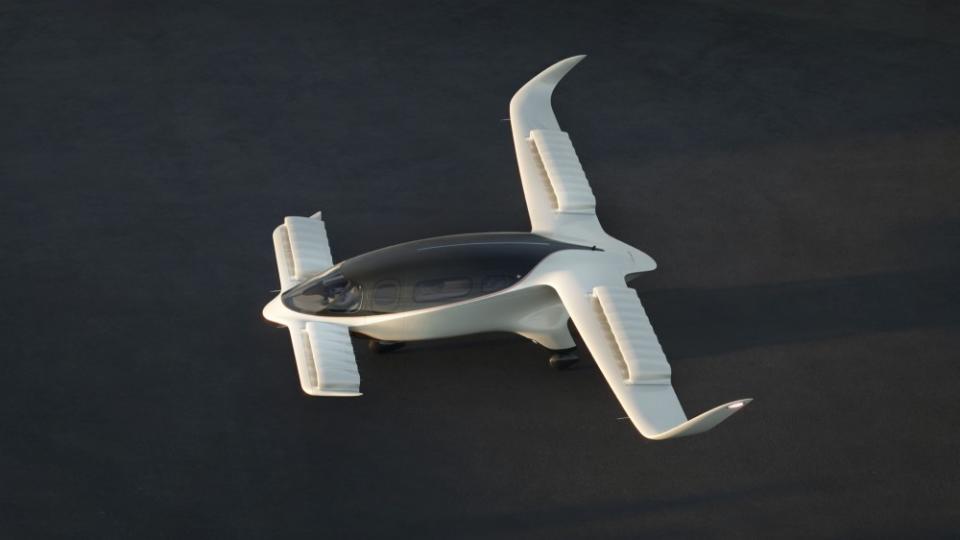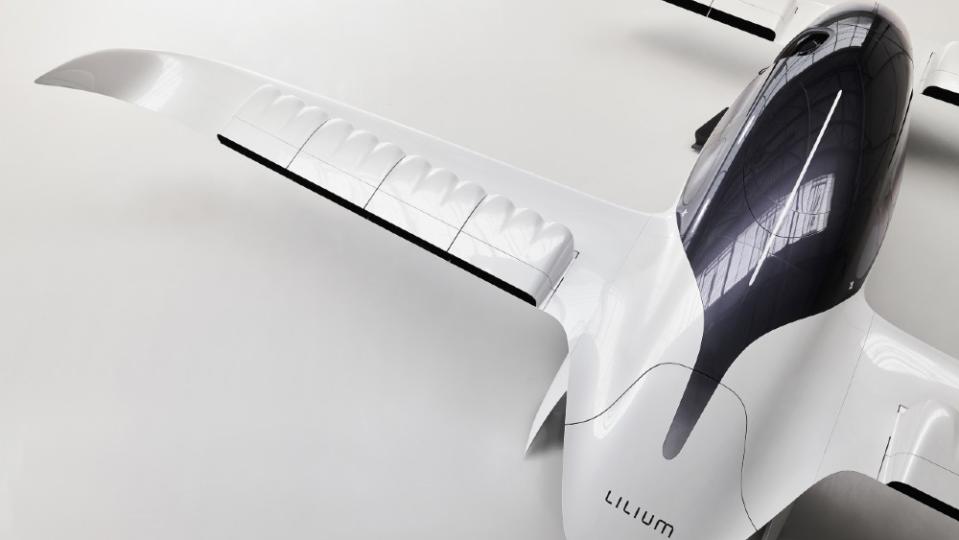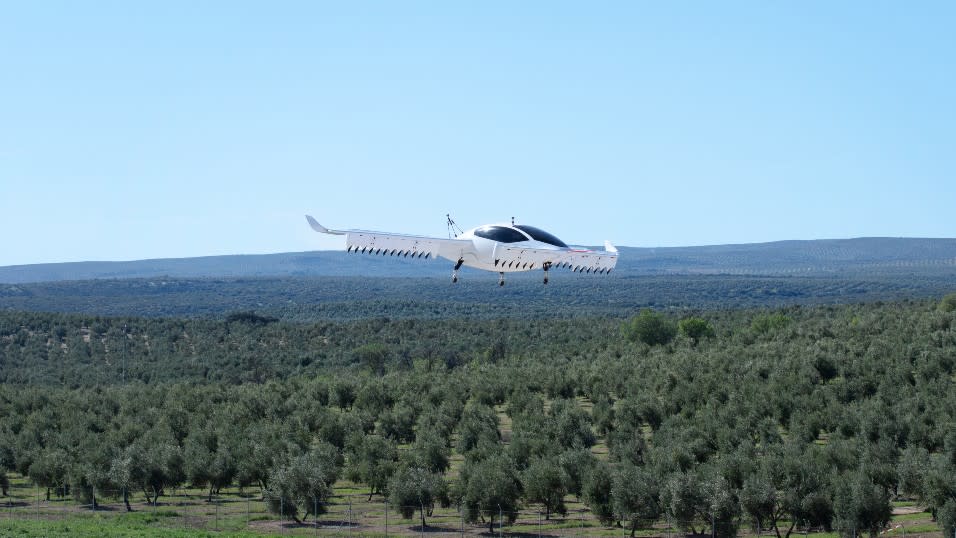This Radical New eVTOL Uses 30 Tilting ‘Jet’ Fans to Get in the Air and Stay There

Electric vertical takeoff and landing (eVTOL) aircraft have been threatening to disrupt short-hop aviation for close to a decade now. Among the hundreds of prototypes that have been released, there are a few standout performers like Joby and Archer. Lilium has also been one of the front-runners.
At the Farnborough air show in the UK in July, the Munich-based company showed for the first time a six-passenger, one-pilot interior, highlighting its collaboration with Diehl Aviation, a leading supplier of aircraft systems and cabin designs to aerospace giants such as Airbus and Boeing.
More from Robb Report
Flying Circuits? Inside the Brave New World of Electric Air Racing
This Transformers-Like eVTOL Concept Is One Step Closer to Hitting the Skies
Meet 'Flying Tiger,' Volkswagen's New 4-Passenger, Fully Autonomous Flying Taxi

Courtesy Lilium
Lilium also announced a partnership with one of the earliest backers of helicopters, Bristow Group, to develop a maintenance program for when its aircraft enters into service.
Two weeks ago, Klaus Roewe also joined Lilium as chief executive. A veteran executive at Airbus, Roewe led the successful A320 and A320Neo programs. He joins another industry heavyweight on the board—former Airbus CEO Tom Enders, who is Lilium’s chairman. Daniel Wiegand, Lilium co-founder and until now CEO, will continue as a director and as chief engineer for innovation and future programs.
The recent announcements were good timing for Lilium, which has received ongoing criticism for both the design of its aircraft and its decision last March to push back type-certification by 12 months to 2025. At the time, then-CEO Wiegand said Lilium plans to build the first production-conforming aircraft for the EASA certification process in 2023. “We will spend the following 15 to 18 months running our final test campaign with the aim of receiving our initial type certification in 2025, with scale production of our aircraft set to begin immediately upon type certification,” he said in a statement.

Courtesy Lilium
The news renewed skepticism regarding claims about battery life and performance. One group of investors threatened a class-action lawsuit. Lilium shrugged off the criticism and began testing at a facility in Spain.
In April, its fifth-generation demonstrator, Phoenix 2, could be seen flying over Villacarrillo, Spain. Lilium said It will have a second demonstrator, Phoenix 3, at the facility this summer. The new demonstrators will result in a significantly accelerated flight-test campaign, said the company.
One of the key issues for the new generation of electric aircraft is efficiency—even the best batteries don’t store much power for their weight. But adding more batteries into an eVTOL to supplement lifting ability requires more power to carry the extra weight of the bigger batteries. That is a vicious circle that Lilium says its prototypes will avoid with new battery technologies.

Courtesy Lilium
Added to that is the fact that vertical lift uses a lot of power—helicopters are less efficient than airplanes—so those eVTOLs that rely on rotors for all of their lift can’t go very far because so much of their battery power is used for staying in the air. The solution is to add wings—but having both rotors and propellers creates another trap of adding weight that still must be moved around when it’s not contributing to flight.
Lilium’s solution includes 36 small electric fans (which will drop to 30 on future prototypes) that it calls “jets” that are distributed across four wings. They swivel in banks to provide both vertical and horizontal thrust. The fans also have individual flaps to vector the thrust. Its wings mean that power consumption in forward flight is just a tenth of that required for moving vertically.
For the wing design, Lilium opted for an unconventional solution: It chose the canard arrangement favored by US aircraft designer Burt Rutan, who penned the world-circling Voyager aircraft and the revolutionary SpaceShipOne. Both fore and aft wings on the Lilium provide lift—60 per cent of the lift in forward flight comes from the main wings, 20 per cent from the smaller canard wings, and the remaining 20 per cent comes from the fuselage.

Courtesy Lilium
This efficiency, even with current battery technology, means that Lilium’s aircraft is designed to connect city centers as far apart as 150 miles at speeds of up to 300 mph. Lilium’s regional air mobility plan fits into regional air-space infrastructures better than the shorter-range, intra-urban, air-taxi models offered by many of Lilium’s competitors.
While battery technology has not moved as fast as many had hoped, it has improved. So much so that when Lilium’s regional eVTOL enters service in 2025, the company plans to immediately start building aircraft for clients like NetJets and Azul airlines in Brazil.
How its radical design technology plays out will become clearer as the company works towards regulatory approval for its aircraft in both the US and Europe.
Best of Robb Report
The Chevy C8 Corvette: Everything We Know About the Powerful Mid-Engine Beast
The 15 Best Travel Trailers for Every Kind of Road-Trip Adventure
Sign up for Robb Report's Newsletter. For the latest news, follow us on Facebook, Twitter, and Instagram.

